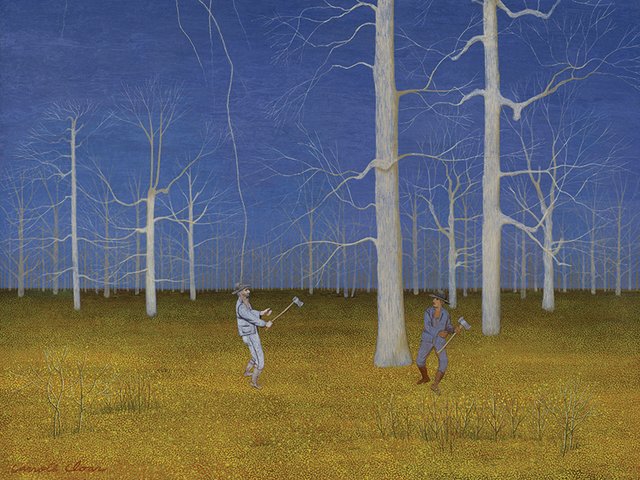Originally trained as an attorney, Hollis Taggart made his first foray into the art world in New Orleans, where he worked for the art dealer Kurt E. Schon. He later founded a gallery with locations in Los Angeles and Washington DC which specialised in nineteenth- and twentieth-century American and European paintings. In 1992, when he moved to New York, he decided to concentrate on American Modernism. Mr Taggart has sold paintings to the Cleveland Museum of Art and the National Portrait Gallery, as well as institutions in Philadelphia, Chicago and St Paul.
Hollis Taggart: More than five years ago at Sotheby’s I watched a Marguerite Zorach Fauve painting vault over its $8,000-12,000 estimate and finally sell for over $25,000. There was a split moment when I thought, “What would it be like to implement a serious gallery exhibition of American Fauves?” Intuitively, I felt there was an eagerness on the part of collectors to move beyond American Impressionism and Ashcan works. In Washington DC I had once thought about putting on such shows, but I felt I needed a larger audience than could be found in the capital. And of course, New York City is the centre of the art world.
My first shows focused on European influences on the American Fauves and Modernists, and they have all had an academic bent to them. In 1997, we mounted “The color of Modernism: the American Fauves” and in 19998”Concerning Expressionism: American Modernism and the German Avant-Garde”. Finally, there is our current show on Arthur B. Carles. All of these shows had comprehensive catalogues and loans from prominent museums. All of our exhibitions have been the result of collaboration with serious academics. No other gallery to my knowledge is really doing the same thing in this area.
We are seeing new collectors enter the field. Specifically in Modernism, I see a lot of crossovers, really converts from other periods. By focusing on a single painter, we present his entire oeuvre. There is an element of discovery. Seeing such artistic growth is essential for understanding not just the painter but also his position in a movement, his place in the history of art.
I see converts to Maurer specifically and Modernism in general emerging from the collectors of American Impressionists like Childe Hassam and John Twachtman as well as the Ashcan school artists like George Bellows. Those artists are becoming increasingly difficult to acquire. So supply and cost are certainly factors. But over and beyond that, the critical attraction of Modernists is the emotional impact of the paintings. Serious collectors want more of a relationship with a painting, certainly more than simply a pretty picture can deliver.
Without a doubt, serious collections of American Modernism are currently being built. For example, I have one collector who has assembled approximately 300 paintings, many of them highly important. These clients collect both figurative and abstract examples. Frequently, they begin by concentrating on figurative works, such as still-lifes, landscapes and portraits. Gradually over time, they supplement their collection with abstract paintings. I believe it takes time to absorb the later works.
As for saleroom prices for Modernists, Marsden Hartley has exploded at auction in only the past twelve months. At Christie’s December sale, his “A nice time” brought $1.65 million. The prices for the first tier of Modernists—Sheeler, Bluemner, O’Keeffe and Hartley—are soaring. A major Hopper can be sold for $20 million. Ultimately, those prices push up those for second and third tier Modernists, even though this group, including Maurer and Carles, is just beginning to be discovered. The average price has doubled in four years and in the next four it will double again.
Originally appeared in The Art Newspaper as 'Moving Taggarts'


